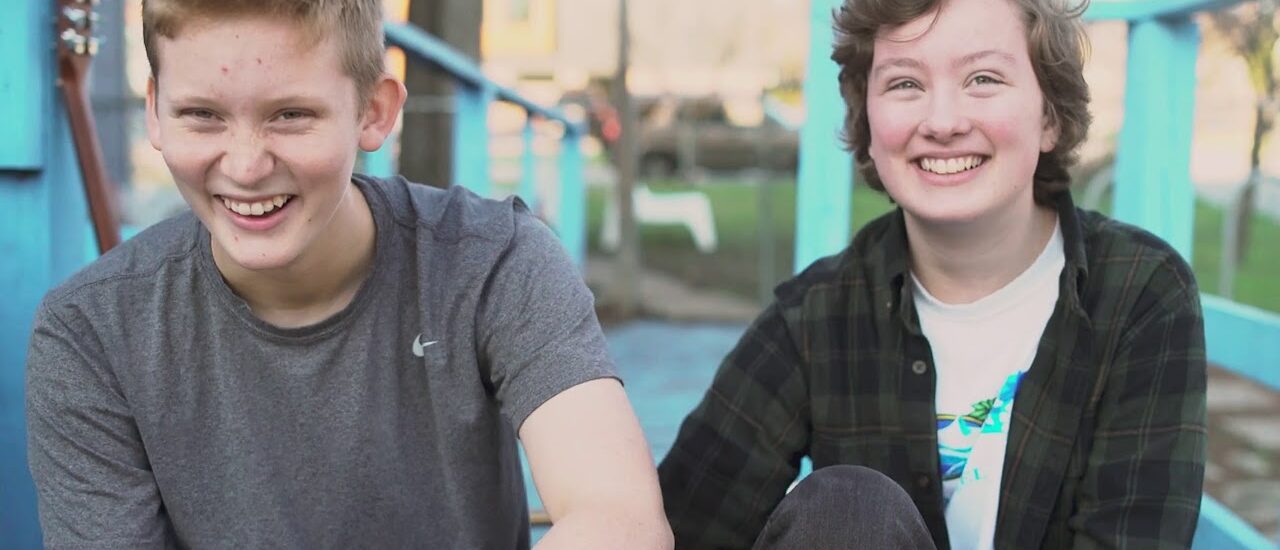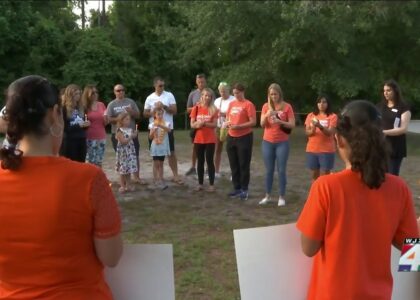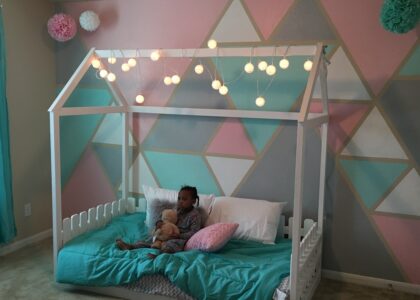A group home is a type of residential treatment facility where youth with mental health problems live in a safe, structured environment. This setting provides daily living needs, emotional support, and a sense of community. Each youth is provided with social and clinical services that are an integral part of their treatment program. These services include casework, behavior modification, and individual or family therapy. In some cases, the youth may have both social and clinical services provided in a clinical setting.
Milieu Therapy
A group home for youth is a therapeutic environment for young people. It offers a structured, homelike setting, where staff ratios are one-to-three. Milieu therapy, individual therapy, educational support, and psychiatric consultation are provided in the therapeutic environment. The children participate in community-based schools, social events, and other activities. They also receive therapeutic services that promote family and community integration.
A milieu treatment team includes a psychiatrist, clinical psychologist, mental health technician, occupational therapist, music therapist, recreational therapist, and dietitian. The team works together to create a supportive and safe environment for the patients. The treatment team promotes healthy interpersonal relationships and integrates personal hygiene into daily routines. They also work to improve executive functioning skills. The milieu therapy environment promotes healthy social interactions among youth, promotes healthy behaviors, and develops self-confidence.
In a milieu therapy environment, the members develop friendships and develop new habits. They also get immediate feedback from other members. This feedback is critical to improving treatment for the members. Furthermore, it is known that milieu therapy is effective in reducing conflict behavior in mental health patients. In fact, it has been shown to reduce violent behavior in patients with schizophrenia. This is a significant benefit for the community, as it promotes stability in mental health without the constant presence of parents and caregivers.
In the treatment of mental disorders, the goal of milieu therapy is to provide the patient with a supportive environment, and minimize the stress of everyday life. The environment provides the time for the patient to identify strengths, develop new coping strategies, and explore the psychodynamics of their problems. In a milieu, the patient forms harmonious relationships and learns to live in community. The environment can be stressful and difficult for the patient as the role of a staff member often blurs.
CP&P
A CP&P group home for youth is a place where children who need care are placed with the least restrictive environment possible. Children with disabilities may benefit from this kind of placement. The Home’s policies specify who is eligible to live there, including age, gender, and behavior. These policies are approved by CP&P when the contract is signed, and they are reviewed and revised every year, in accordance with the Manual of Requirements for Children’s Group Homes.
After your child is admitted to the group home, staff conduct an assessment of the child’s situation and develop a treatment plan that will address their needs and help them reach their goals. This treatment plan includes education, recreation, and social services, as well as provisions for special physical and emotional needs. The treatment plan is then forwarded to the child’s Worker for approval. The Child Placement Review Board (CP&P) also reviews the placement of youth in group homes.
The treatment plan is developed with input from the child and family. It identifies specific services the group home program will provide, as well as services provided by community agencies. The Local Office Worker, who has a specific responsibility for each child’s care, receives regular progress reports to keep the plan up to date. A CP&P Worker should also be involved in staffing and formulation. He or she should be involved in all phases of treatment.
The program also includes vocational services, which are available to youth returning to the community. Life skills training is offered to youth ages 14 and older, based on their school performance, interests, and abilities. The staff of CP&P group homes will work with the child’s guardian and family member to provide a healthy and nurturing environment. These services are an integral part of the treatment plan for each youth.
Children’s System of Care
Providing quality care for young people is vitally important for a child’s health and development. New Jersey’s Children’s System of Care division serves youth up to 21 years old. Its programs emphasize child family teams and trauma-informed care, while providing coordinated access to resources. Moreover, it helps families stay connected to each other, regardless of the child’s need for care. Below are a few things to look for in a Children’s System of Care group home for youth.
First, DHS engaged the provider community. Its membership organization, the Coalition for Family and Children’s Services in Iowa, provided input for the proposed changes to the contract. The coalition also helped DHS identify concerns of providers and made sure all communications were clear. Second, the department used data to justify reallocating beds to residential providers. Data demonstrates that the residential providers improved youth outcomes by using four new performance measures. Third, the contracts emphasize permanency. However, they do not include specific system of care performance measures.
Lastly, the Pennsylvania System of Care Partnership was designed to improve service quality by providing high-fidelity wraparound services. The evaluation used child behavior checklist, caregiver stress questionnaire, Columbia Impairment Scale, Reynold’s Adolescent Depression Scale, and multi-sector service contact data. The results of the evaluation showed a reduction in youth arrests, convictions, and psychiatric inpatient services.
Children’s System of Care group homes for youth are designed to provide a wide range of services. In addition, the services should be family-directed, youth-guided, culturally competent, and individualized. Each system of care develops guiding principles and core values that align with its mission and philosophy. For example, SOC group homes for youth should be community-based, youth-guided, culturally competent, and community-based.
Group homes
While most children and youth in care of group homes do so for psychiatric or medical reasons, these placements are often not ideal for developing healthy emotional and social lives. This is because the group home setting cannot prepare these youth for successful reentry into society. For this reason, the placement is typically best for adolescent girls. Fortunately, there are other options. In addition to group homes, families can also use these services to help children and youth in care become more independent.
Some group homes for youth provide aftercare for residents who leave. These services include casework support, advocacy for the child, and monitoring the discharge plan. They also work closely with family members and service-providing community agencies to ensure that the plan is carried out. The Worker reviews these contacts every six months to make sure the plan is being followed. The Child’s Worker is notified of any changes in the child’s situation.
The current study is limited in scope, but it sheds light on differences between group homes. Even homes in the same region may have slightly different models of care and serve different subgroups. Further research from this study will explore how practices and services within group homes impact youth outcomes. A greater focus on differentiation may be needed to understand the complexities of community-based settings and recognize the limitations of homogenous groupings. The authors encourage more research on group homes.
While group homes do not necessarily provide therapy, they offer a supportive community where troubled teens can learn to cope with their emotions and reintegrate into society. The aim of the program is to help troubled teens gain confidence and emotional footing in a supportive community, regaining independence, and coping with social situations. They also help troubled youth develop healthy coping mechanisms and the confidence to face challenges in adulthood. A group home can help a troubled teen achieve independence and become independent.
Residential treatment facilities
The term “residential treatment facility” describes a facility where children live, work, and receive mental health services. It is part of the Department of Mental Health. These facilities receive funding from Medicaid, insurance, or the foster care system. Residential treatment facilities are designed for long-term care, whereas inpatient care is more short-term. They are more often staffed by a team of professionals and supervised by a trained psychologist.
Many residential treatment facilities are supervised, locked environments with staff monitoring daily activities. Residential treatment facilities must adhere to strict IEPs and school guidelines to ensure the safety and wellbeing of youth. Programs can include outings in the community, cottages, and other facilities. Children who participate in these programs may also receive positive reinforcement and rewards. It is important to note that residential treatment facilities do not accept any child with a mental disorder without a medical evaluation.
A residential treatment facility for youth is an alternative to traditional psychiatric hospitals. Teenagers can receive counseling and therapy from a trained therapist, but the intensity of these services can vary. Some group homes offer only minimal drug and alcohol education and rehabilitation programs. While some are residential, others are more like a group home for adolescents. In order to make the best decision for your teen, make sure you understand the benefits and drawbacks of group homes.
Despite the benefits, not all Group Homes are created equal. Taking the time to investigate a prospective program is an essential component of effective rehabilitation. Parents should always be diligent when choosing a Residential Treatment Facility or Group Home for their troubled youth. Doing background checks and comparing prices is important. It is essential to make sure that the home’s mission and goals are compatible with the needs of the youth. In many cases, the treatment center will be able to help your child make the necessary changes.





